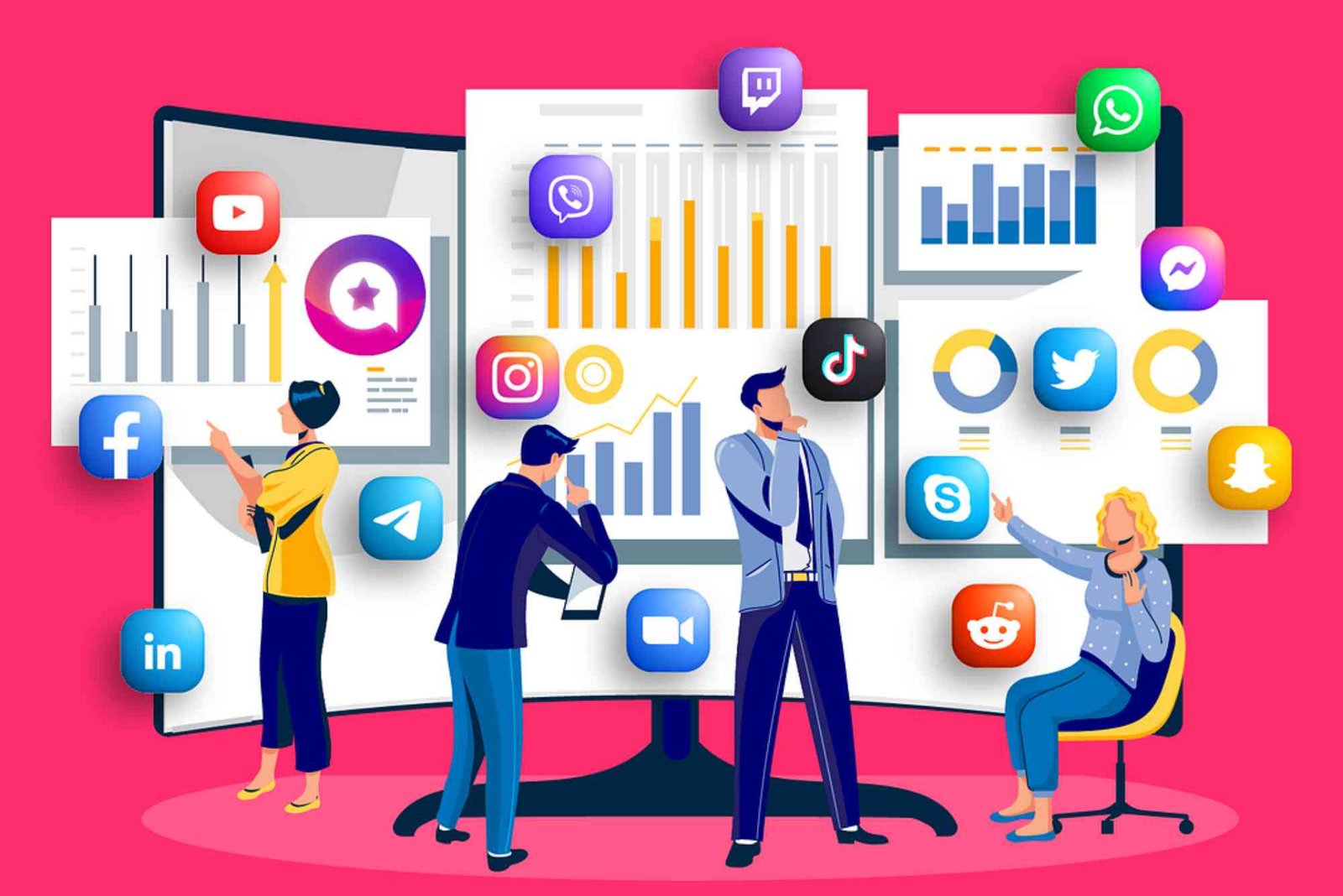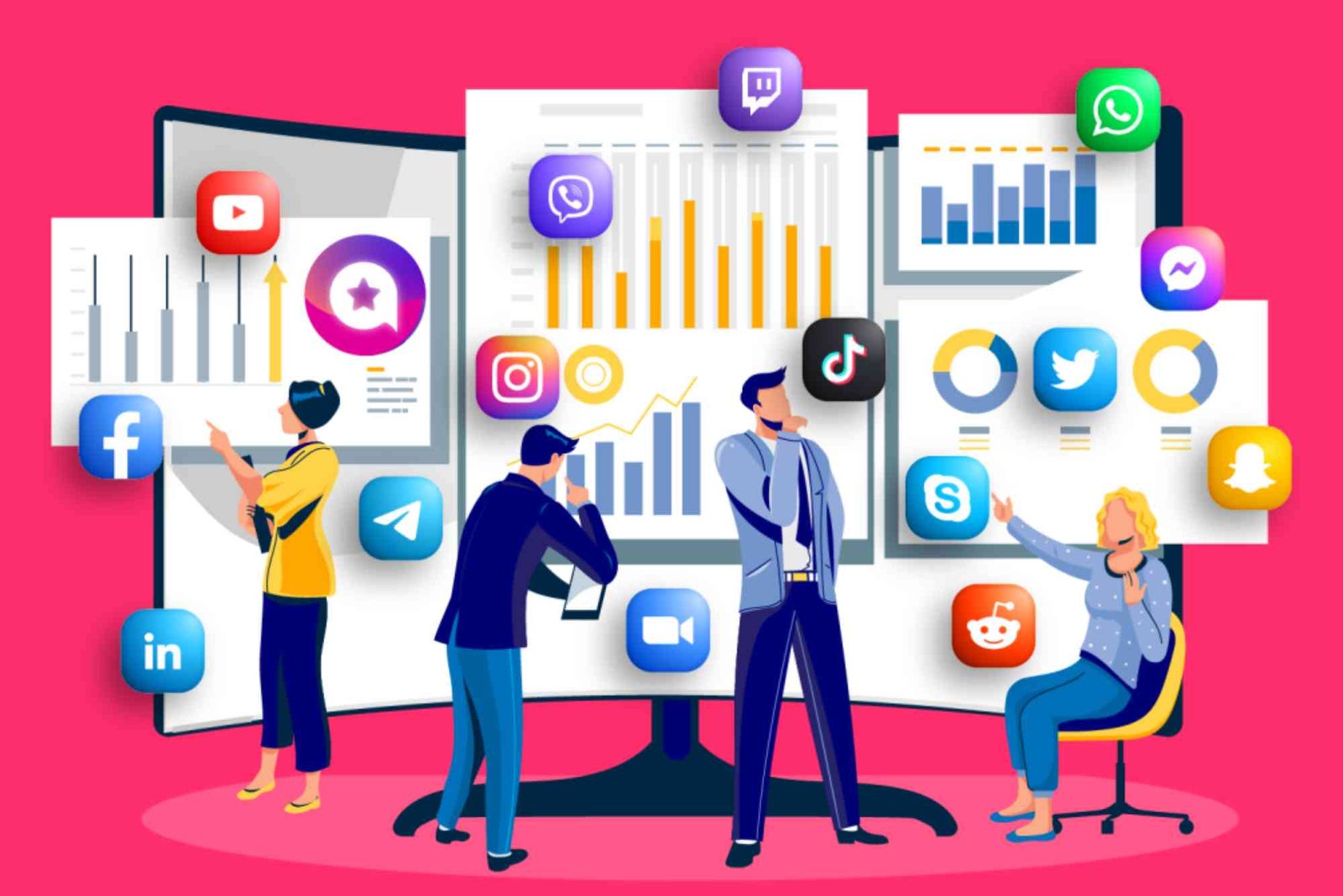Introduction
Social media marketing has become one of the most powerful tools in the modern business world. But did you ever wonder how did social media marketing start and what lessons can we draw from its evolution? Understanding its roots helps marketers develop better strategies for today’s fast-paced digital world.
The Origin of Social Media Marketing
The story of social media marketing begins in the early 2000s when the internet was transforming communication. Platforms like MySpace, Friendster, and later Facebook created a new way for people to connect. Marketers quickly saw an opportunity to use these platforms to reach audiences more directly than traditional advertising methods. Before social media, marketing was one-directional—brands spoke, and customers listened. With social media, this changed entirely. Conversations began to flow both ways. Brands could now engage in real-time, respond to customer feedback, and build communities around their products. This interactivity laid the foundation for what we now call social media marketing.
The Rise of Major Social Platforms
Facebook and the Personalization Revolution
When Facebook launched in 2004, it became a game-changer. For the first time, marketers could access detailed demographic data to target audiences precisely. Facebook Ads, introduced in 2007, allowed brands to personalize messages based on user behavior, interests, and preferences. This data-driven approach revolutionized advertising by focusing on relevance rather than reach alone.
Twitter and Real-Time Engagement
In 2006, Twitter introduced microblogging—a concise, fast-paced form of communication. This was the start of real-time marketing, where brands could respond instantly to trends or customer queries. Companies began to use hashtags to join conversations and increase visibility, which became a key engagement strategy across all social platforms.
Instagram and Visual Storytelling
The launch of Instagram in 2010 took social media marketing to another level. It proved that visuals could drive engagement far more effectively than text alone. Brands started focusing on storytelling through images and short videos, setting the stage for influencer marketing—a trend that dominates today.
LinkedIn and Professional Branding
LinkedIn, founded in 2003, emerged as the platform for B2B marketing. It allowed companies to connect with professionals, share insights, and establish authority. For many brands, LinkedIn became a space to showcase expertise rather than just products.
Evolution from Basic Posts to Strategic Campaigns
In the early days, social media marketing was experimental. Businesses posted simple updates and waited for reactions. Over time, analytics tools became available, allowing marketers to measure engagement, conversion rates, and customer sentiment. Campaigns became more strategic, combining storytelling, data analysis, and customer psychology. Content calendars, influencer collaborations, and paid ad strategies turned social media into a structured marketing discipline.
The Power of Influencer Marketing
One of the biggest shifts in social media marketing was the rise of influencers. These individuals built trust with their followers by sharing authentic experiences. Brands began collaborating with them to promote products organically. Influencer marketing works because it feels personal and relatable—qualities that traditional ads often lack. From YouTube creators to TikTok stars, influencers became a bridge between brands and audiences, making marketing more human-centered.
Practical Tips for Modern Social Media Marketing
Focus on Authentic Engagement
Today’s audience values honesty and transparency. Don’t focus solely on promotion—focus on connection. Respond to comments, ask for feedback, and show the people behind your brand. Genuine interaction fosters loyalty.
Create Shareable, Story-Driven Content
Stories connect emotionally. Use them to communicate your brand’s mission or highlight customer success stories. A well-crafted narrative can make your content go viral, increasing visibility and engagement.
Leverage Data and Analytics
Track metrics such as engagement rate, click-through rate, and audience growth. Use these insights to refine your content strategy. Understanding what resonates with your followers ensures continuous improvement.
Utilize Paid Advertising Wisely
Organic reach is limited on most platforms, so paid promotions are essential. However, use them strategically. Define your target audience, set a realistic budget, and test different ad formats to identify what works best.
Collaborate with Influencers
Influencers can amplify your brand message. Choose those who align with your values and audience. Micro-influencers often deliver better engagement than larger ones because of their close connection with followers.
Stay Updated on Trends
Social media evolves rapidly. New features, algorithms, and user preferences appear regularly. Staying informed helps you adapt your strategy before competitors do.
Diversify Your Platforms
Don’t rely on a single platform. Each network has unique strengths. For example, use Instagram for visuals, LinkedIn for thought leadership, and X (formerly Twitter) for quick updates. A diverse strategy spreads risk and maximizes reach.
The Role of Algorithms in Social Media Marketing
Algorithms dictate what users see. Early platforms showed posts chronologically, but now engagement determines visibility. This means high-quality, interactive content is more likely to appear in users’ feeds. Marketers must therefore focus on relevance and interaction. The more your audience engages, the more visible your brand becomes.
The Transition to Video and Short-Form Content
Platforms like TikTok and Instagram Reels have made short videos the most engaging form of content. Attention spans are shrinking, and users prefer quick, entertaining clips. Brands that master short-form storytelling can significantly increase reach and conversion.
How Did Social Media Marketing Start – Lessons for the Future
Understanding how social media marketing started teaches us important lessons. The early days emphasized community and authentic communication, while today’s marketing often leans toward automation and paid ads. The best strategy lies in balance—use technology for efficiency but never lose the human touch. Consistency, creativity, and authenticity remain timeless principles. For a deeper dive into marketing evolution, visit How Did Social Media Marketing Start.
Common Mistakes to Avoid
Many brands make the mistake of treating social media as a broadcasting channel rather than a conversation platform. Overposting promotional content, ignoring customer feedback, or using irrelevant hashtags can hurt engagement. Another common error is neglecting visual quality—poorly designed graphics can reduce trust and credibility.
Future Trends in Social Media Marketing
Artificial intelligence, augmented reality, and personalized experiences are shaping the next generation of marketing. Chatbots are improving customer service, while AI-driven analytics help predict trends. As platforms integrate shopping features, social commerce will continue to grow, blending marketing and sales seamlessly.
Importance of Community Building
Building an engaged community is more powerful than gaining followers. Communities drive long-term growth through loyalty and advocacy. Encourage discussions, host live sessions, and offer value through educational posts or behind-the-scenes content. A strong community turns customers into brand ambassadors.
Social media marketing has come a long way since its humble beginnings. From MySpace bulletins to AI-driven campaigns, it continues to evolve with technology and culture. The most successful brands understand that marketing is no longer about selling—it’s about storytelling, connection, and value creation. If you want to stand out, focus on authenticity, adapt to trends, and engage meaningfully with your audience. For related insights, check out this Related Marketing & Advertising article.
Whether you’re a startup or an established brand, mastering social media marketing can transform your visibility and success. Stay creative, stay curious, and most importantly—stay social. Ready to take your brand to the next level? Start refining your social media strategy today and explore more marketing insights. Learn more about innovative approaches to grow your online presence effectively.
FAQs
1. When did social media marketing start?
Social media marketing began in the early 2000s with platforms like MySpace and Friendster. It gained momentum with Facebook’s ad system in 2007.
2. Why is social media marketing important today?
It helps brands connect directly with their target audience, build trust, and increase brand visibility at a relatively low cost.
3. Which platform is best for social media marketing?
It depends on your goals. Instagram is great for visuals, LinkedIn for B2B networking, and TikTok for younger audiences.
4. How can small businesses use social media effectively?
Focus on authentic engagement, consistent posting, storytelling, and using analytics to guide improvements.
5. What’s the future of social media marketing?
AI-driven personalization, immersive experiences through AR, and integrated shopping features will define the future of this dynamic field.











